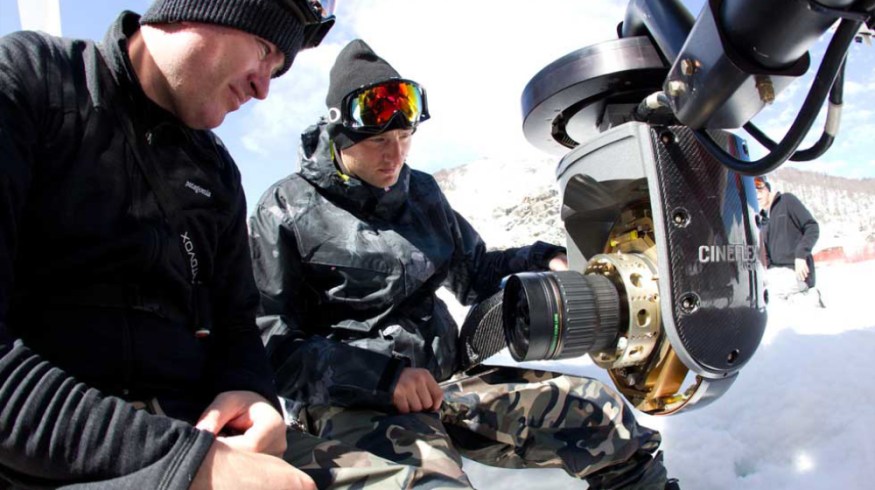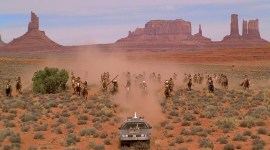
The Technology Behind Brain Farm’s Breathtaking Camerawork
Brain Farm Digital Cinema is a production company known for its work in advertisement, television, and most of all, action sports documentaries. Let’s take a look at some of the revolutionary technology they have worked with over the years.
Top image via Scott Serfas
If you aren’t familiar with Brain Farm themselves, you have still likely come across their extensive work, even if just one of their many commercials. They are most well-known for their action sport films, namely That’s It, That’s All, followed by The Art of Flight, We Are Blood, and View From a Blue Moon.
Instant classics of their own respective sports, these films all share the signature visual characteristics Brain Farm has become known for: dynamic aerial footage of exotic landscapes juxtaposed against tight, immersive tracking shots of high-speed sports action. If you haven’t watched any of these yet, they are certainly worth your time, regardless of your interest in their subject matter.
Their success with these difficult visual techniques is largely attributable to their consistent involvement in the development of vehicular camera technology over the years. Simultaneously achieving shots of such epic scope and organic movement requires not only expertise, but also some of the most sophisticated camera gear on the market. Without further ado, welcome to the stunning world of Brain Farm.
While Brain Farm has produced films under multiple directors, all of their projects have highlighted the possibilities of shooting with a helicopter, with it being their primary tool to capture action from a new perspective. This has become less inherently impressive over the past decade, as many Hollywood movies have showcased the technology since the advent of The Lord of the Rings trilogy, but Brain Farm was actually among the first to utilize what has become their weapon of choice: the Cineflex camera control and stabilization system.
 Photo via Wikipedia
Photo via Wikipedia
Premiering with the epics The Lord of the Rings and Planet Earth, Cineflex’s state-of-the-art gimbals, boasting variations of the ARRI ALEXA, brought forth unprecedented possibilities of what could be achieved with a camera. Brain Farm founder Curt Morgan drew inspiration from these stunning films and took the new tech to the world of extreme sports — namely snowboarding, the focus of Morgan’s directing experience. After the success of That’s It, That’s All, the start-up production company that Morgan and co-founder Travis Rice built drew significant attention, leading to years of quality content.
The crew behind these visceral productions has undoubtedly grown accustomed to shooting in adverse (even dangerous) environments, but familiarity has hardly made their work easy. This brief behind-the-scenes look into Convergence shows how much time and planning even a single shot can take when there are so many elements at play.
National Geographic eventually sought out and employed Brain Farm for a few projects, such as the series Wild Yellowstone. Here they further demonstrate the flexibility of the Cineflex system by mounting it to a large truck. With flawless stabilization and a dedicated control console, the crew shows the process of locating wildlife and capturing a rather rare bison fight with captivating camera movement.
With their extensive involvement in aerial cinematography, it was inevitable that Brain Farm would experiment with the recent upsurge of drone technology. While the development and combination of new technologies is a product of their various manufacturers and not Brain Farm themselves, the progressive production company is often the motivating factor in combining tools and driving said manufacturers to push their limitations.
In most situations, shooting from a helicopter is optimal, but budgetary, spatial, and environmental constraints can often make smaller alternatives preferable.
Their venture into drone technology began as early as 2012, with the retrofitting of a Cineflex system to a small military-grade drone helicopter. This new toy removed the dangers of piloting a manned helicopter in risky weather conditions, and was simply more portable than its full-sized counterparts. This emphasizes the fact that even the best tools available have their limits, and you can’t rely on hardware to produce quality results.
Brain Farm is also known for their flashy slow-motion sequences, made possible by high frame rate cameras such as the Phantom series. They eventually became the first to mount a Phantom (specifically, the Phantom Flex4K, their flagship model) to a drone, allowing them to capture slow-motion aerial footage with a compact and nimble device.
Curt Morgan and his crew try to stay on the forefront of all cinematic technology, including less exciting tools such as lights. Many filmmakers are beginning to utilize LED lighting, as it has finally become effective enough to justify its use. With adjustable color temperature, low power consumption, extended bulb life, and a simpler setup process, modern LEDs have a lot to offer. Here, legendary action sports director Ty Evans elaborates on the advantages of replacing his traditional lighting setups with LEDs for the production of this year’s We Are Blood.
Through both the development of his own production company, and his constant drive to push what is technologically possible in the action sports genre, Curt Morgan is a shining example of systematically stripping oneself of all limitations to express a vision. His work as producer, director, and entrepreneur is an inspiration to me, and hopefully it can be to you as well. With that, we’ll end on this fantastic mini-doc about Curt’s career thus far.
Who do you find pushes the envelope of digital cinema? Let us know in the comments below.





